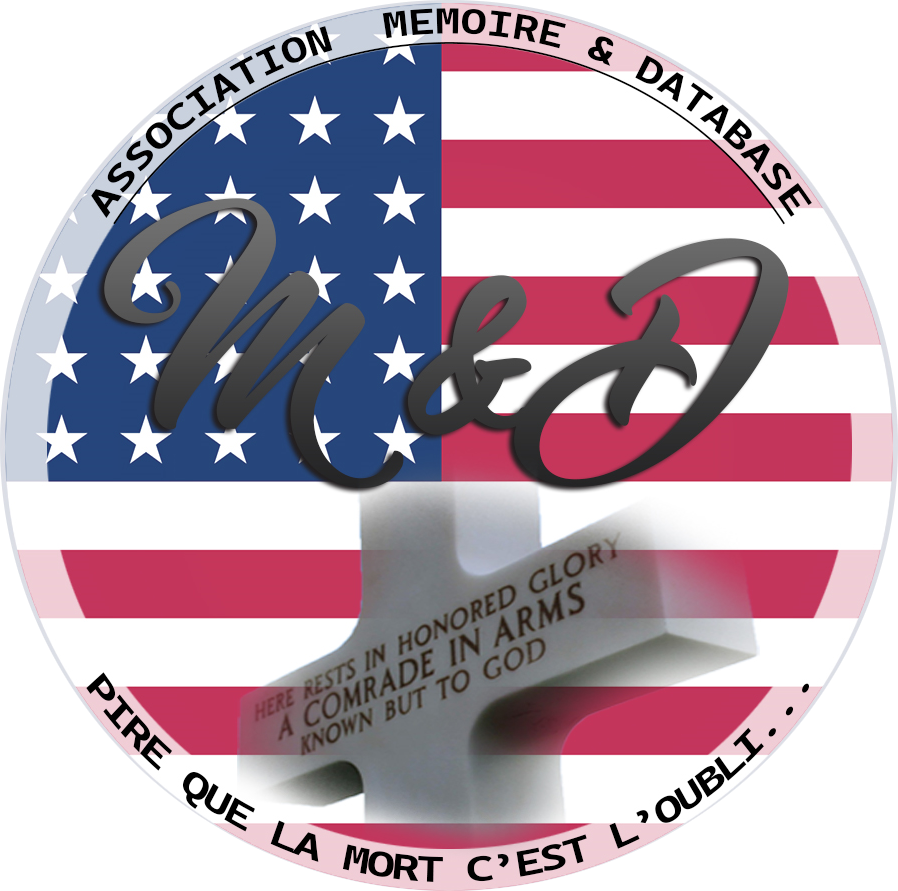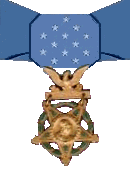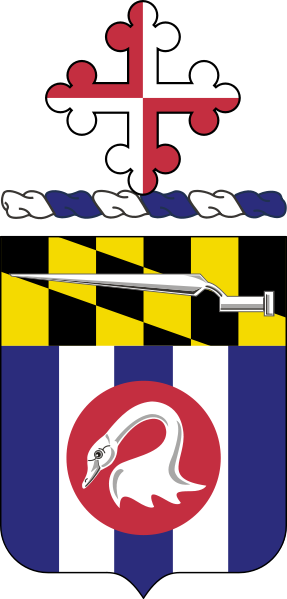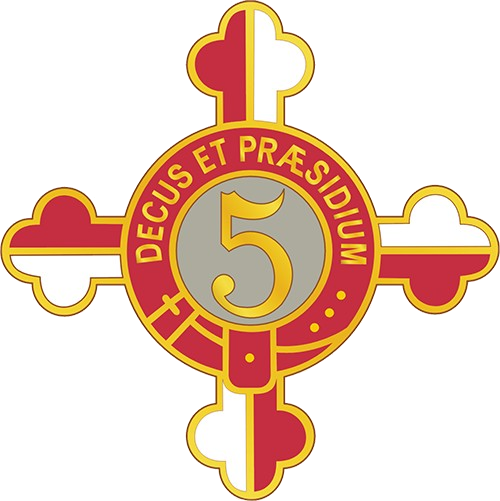|
Sherwood Henry HALLMAN
| ||||||||||||||||||||||||
|---|---|---|---|---|---|---|---|---|---|---|---|---|---|---|---|---|---|---|---|---|---|---|---|---|
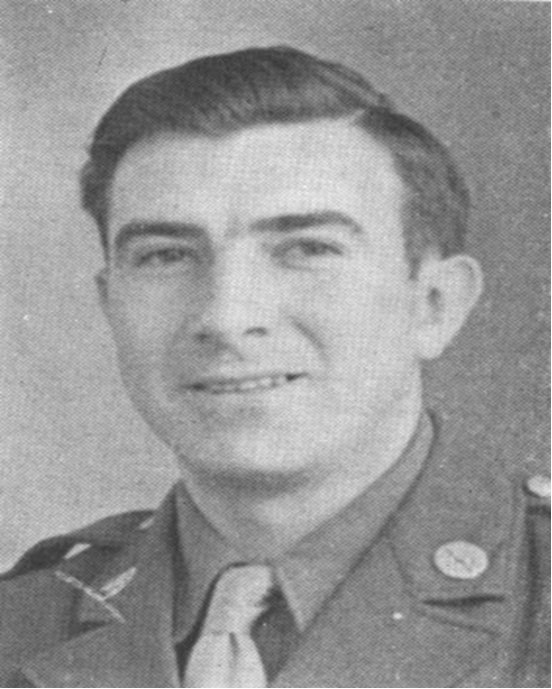 | ||||||||||||||||||||||||
| NUMBER OF SERVICE | 33479009 | |||||||||||||||||||||||
| AGE | 30 yo | |||||||||||||||||||||||
| DATE OF BIRTH | 29 October 1913 Spring City, Chester County | |||||||||||||||||||||||
| ETAT | PENNSYLVANIA | |||||||||||||||||||||||
| FAMILY | Epouse : Virginia D DIETER REINBOLD Parents : Harry H. & Emma Poinsett HALLMAN Siblings : Raymond Oliver & Grace B. | |||||||||||||||||||||||
| RANK | Staff Sergeant | |||||||||||||||||||||||
| FONCTION | InfantryMan | |||||||||||||||||||||||
| JOB BEFORE ENLISTEMENT | Skilled meatcutters, except in slaughtering and packing houses |  | ||||||||||||||||||||||
| DATE of ENLISTEMENT | 1 January 1943 Philadelphia PENNSYLVANIA | |||||||||||||||||||||||
| COMPANY | Company F | |||||||||||||||||||||||
| BATTALION | 2nd Battalion | |||||||||||||||||||||||
| REGIMENT | 175th Infantry Regiment | |||||||||||||||||||||||
| DIVISION | 29th Infantry Division | |||||||||||||||||||||||
| DATE OF DEATH | 14 September 1944 | 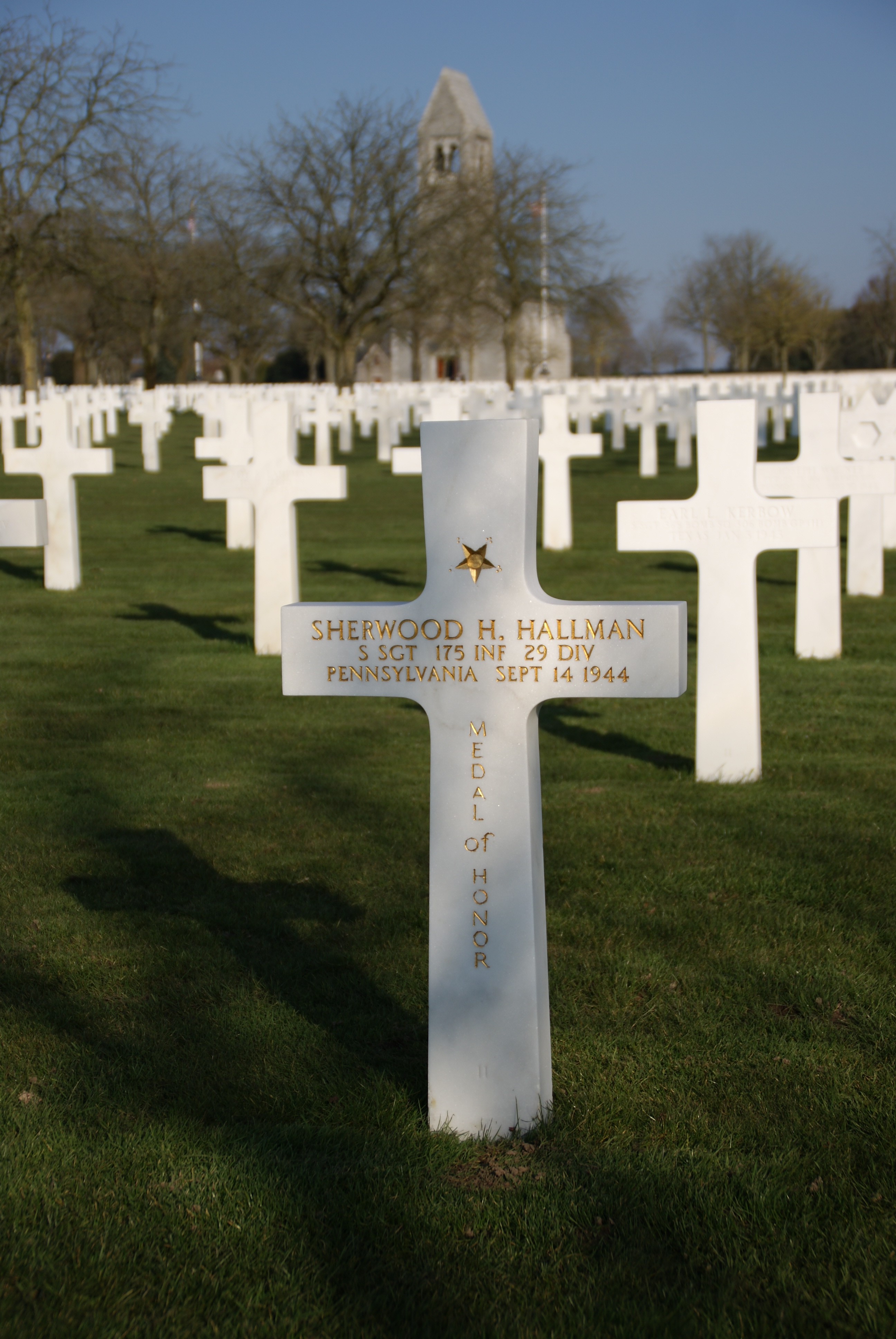 | ||||||||||||||||||||||
| STATUS | KIA | |||||||||||||||||||||||
| PLACE OF DEATH | Brest | |||||||||||||||||||||||
| CEMETERY TEMPORARY |
CEMTERY TEMPORARY of -- N°--
| |||||||||||||||||||||||
| CEMETERY | BRITTANY AMERICAN CEMETERY of St James (Montjoie St Martin) | |||||||||||||||||||||||
| GRAVE |
| |||||||||||||||||||||||
| DECORATION |
| |||||||||||||||||||||||
| ||||||||||||||||||||||||
| STORY | ||||||||||||||||||||||||
|
Sherwood H. HALLMAN was born in Spring City, Pennsylvania on October 29, 1913. He has 2 brothers and 2 sisters. His father works in the postal service. In 1939, he set up his small business: a mobile grocery store, on board an equipped van. His father died in December 1941. Sherwood marries Virginie Dieter on January 4, 1942. On January 8, 1943, he was called up and trained at Fort Mc Clellan, Alabama. In May 1943, he crossed the Atlantic for England and stationed in Cornwall. He is assigned to the 2nd Battalion Company F of the 175th Regiment of the 29th Division. After a year of intensive training, he landed on June 6, 1944 on Omaha. On June 7, he was wounded by a friend friendly fire and was evacuated to England for treatment. He joined his unit a fortnight later. For his act of bravery against the enemy on September 13, 1944, he was awarded the "Medal of Honor", the highest decoration of the United States Army, awarded posthumously on April 17, 1945. | 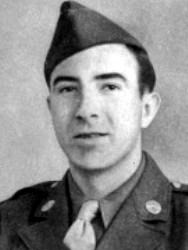 | |||||||||||||||||||||||
| CITATION |
World War II Congressional Medal of Honor Recipient. He served in the United States Army during World War II as a Staff Sergeant on the 2nd Battalion, 175th Infantry Regiment, 29th Infantry Division. He was awarded the Medal of Honor for his bravery on September 13, 1944, in Brittany, France. His citation reads For conspicuous gallantry and intrepidity at risk of his life above and beyond the call of duty. The 2d Battalion in its attack on the fortified city of Brest was held up by a strongly defended enemy position which had prevented its advance despite repeated attacks extending over a 3-day period. Finally, Company F advanced to within several hundred yards of the enemy position but was again halted by intense fire. Realizing that the position must be neutralized without delay, S/Sgt. Hallman ordered his squad to cover his movements with fire while he advanced alone to a point from which he could make the assault. Without hesitating, S/Sgt. Hallman leaped over a hedgerow into a sunken road, the central point of the German defenses which was known to contain an enemy machinegun position and at least 30 enemy riflemen. Firing his carbine and hurling grenades, S/Sgt. Hallman, unassisted, killed or wounded 4 of the enemy, then ordered the remainder to surrender. Immediately, 12 of the enemy surrendered and the position was shortly secured by the remainder of his company. Seeing the surrender of this position, about 75 of the enemy in the vicinity surrendered, yielding a defensive organization which the battalion with heavy supporting fires had been unable to take. This single heroic act on the part of S/Sgt. Hallman resulted in the immediate advance of the entire battalion for a distance of 2,000 yards to a position from which Fort Keranroux was captured later the same day. S/Sgt. Hallman's fighting determination and intrepidity in battle exemplify the highest tradition of the U.S. Armed Forces." The day after his heroism he was killed in action. His Medal was awarded to him posthumously on April 17, 1945.
| |||||||||||||||||||||||
 | ||||||||||||||||||||||||
Activated/Activé |
Normandy/Normandie |
| 3 Feb 1941 | Days of Combat/Jour de Combat 242 |
| Casualties/Victimes 20 620 | |
Entered Combat/Entré au combat |
|
| 6 Jun1944 D-Day | |
|
Commanding Generals/Commandants généraux Maj. Gen. Milton A. Reckord (Feb 41 - Jan 42) |
Campaigns/CampagnesNormandy (6 Jun 44 - 24 Jul 44)
|
PLAN DE ROUTE DE LA CAMPAGNE - CAMPAIGN ROUTE MAP |
|
 |
|
DIVISION CHRONICLEThe 29th Infantry Division trained in Scotland and England for the crosschannel invasion, October 1942-June 1944. Teamed with the 1st Division, a regiment of the 29th (116th Infantry) was in the first assault wave to hit the beaches at Normandy on D-day, 6 June 1944. Landing on Omaha Beach on the same day in the face of intense enemy fire, the Division soon secured the bluff tops and occupied Isigny, 9 June. The Division cut across the Elle River and advanced slowly toward St. Lo, fighting bitterly in the Normandy hedge rows. After taking St. Lo, 18 July 1944, the Division joined in the battle for Vire, capturing that strongly held city, 7 August. Turning west, the 29th took part in the assault on Brest, 25 August-18 September 1944. After a short rest, the Division moved to defensive positions along the Teveren-Geilenkirchen line in Germany and maintained those positions through October. (In mid-October the 116th Infantry took part in the fighting at the Aachen Gap.) On 16 November the Division began its drive to the Roer, blasting its way through Siersdorf, Setterich, Durboslar, and Bettendorf, and reaching the Roer by the end of the month. Heavy fighting reduced Julich Sportplatz and the Hasenfeld Gut, 8 December. From 8 December 1944 to 23 February 1945, the Division held defensive positions along the Roer and prepared for the offensive. The attack jumped off across the Roer, 23 February, and carried the Division through Julich, Broich, Immerath, and Titz, to Munchen-Gladbach, 1 March 1945. The Division was out of combat in March. In early April the 116th Infantry helped mop up in the Ruhr area. On 19 April 1945 the Division pushed to the Elbe and held defensive positions until 4 May. Meanwhile, the 175th Infantry cleared the Klotze Forest. After VE-day, the Division was on military government duty in the Bremen enclave. |
CHRONIQUE DE DIVISIONLa 29th Infantry Division s'entraîna en Ecosse et en Angleterre pour l'invasion crosschannel, d'octobre 1942 à juin 1944. En équipe avec la 1st Division, un régiment du 29th (116th Infantry) se trouvait dans la première vague d'assaut pour frapper les plages de Normandie. Le 6 juin 1944, débarquant à Omaha Beach, le même jour, face à un feu nourri de l'ennemi, la division s'empara bientôt des falaises et occupa Isigny, le 9 juin. La Division traversa la rivière Elle et s'avança lentement vers Saint-Lô, se battant amèrement dans les rangées de haies de Normandie. Après avoir pris St. Lo, le 18 juillet 1944, la division se joignit à la bataille de Vire pour s'emparer de cette ville fortement occupée, le 7 août. Tournant vers l'ouest, le 29 a pris part à l'assaut sur Brest, 25 août-18 septembre 1944. Après un court repos, la division a déménagé à des positions défensives le long de la ligne Teveren-Geilenkirchen en Allemagne et a maintenu ces positions jusqu'en octobre. (À la mi-octobre, le 116e régiment d'infanterie prit part aux combats à Aix-la-Chapelle.) Le 16 novembre, la division commença sa route vers la Roer, traversant Siersdorf, Setterich, Durboslar et Bettendorf, et atteignant la Roer par la fin du mois. Les combats intenses ont réduit Julich Sportplatz et le Hasenfeld Gut, le 8 décembre. Du 8 décembre 1944 au 23 février 1945, la division occupe des positions défensives le long de la Roer et se prépare à l'offensive. L'attaque a sauté à travers le Roer, le 23 février, et a porté la Division par l'intermédiaire de Julich, Broich, Immerath, et Titz, à Munchen-Gladbach, le 1er mars 1945. La Division était hors combat en mars. Au début du mois d'avril, le 116th Infantry a aidé à nettoyer la région de la Ruhr. Le 19 avril 1945, la division pousse vers l'Elbe et occupe des positions défensives jusqu'au 4 mai. Pendant ce temps, le 175th Infantry a dégagé la forêt de Klotze. Après le jour de la victoire, la division était en service militaire dans l'enclave de Brême. |
| SOURCE INFORMATION & PHOTO | Armydivs.squarespace.com |
|---|
| SOURCE INFORMATION & PHOTO | Stéphane du 29-lets-go.over-blog.com - Frédéric LAVERNHE |
|---|---|
| PROGRAMMER | Henri, Garrett, Clive, Frédéric & Renaud |


